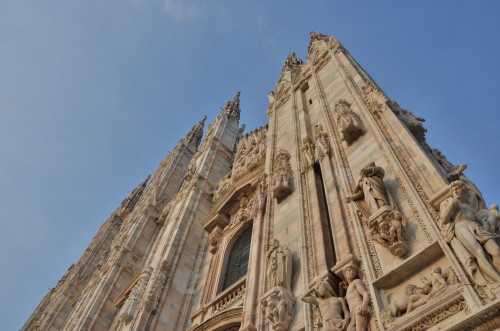
My recent visit to Milan, Italy was not my first. My 2007 stay was around 24 hours in length and my reasons for having returned to Milan were somewhat similar.
Five years ago, I was following Tori Amos around Europe and was in town to see her tour stop here. This time I made the most of the fact that I couldn’t affordably fly directly to Naples, my true Italy travel destination, and decided to enjoy a break in Milan.
The difference, you see, is that I literally saw nothing of Milan the first time around. How much could I possibly see, anyway?
The answer, I finally discovered last Thursday, was that 24 hours is enough to get an intimate introduction to Italy’s fashion capital.
Let me show you what I’m talking about.
The Duomo is Milan’s most famous tourist attraction
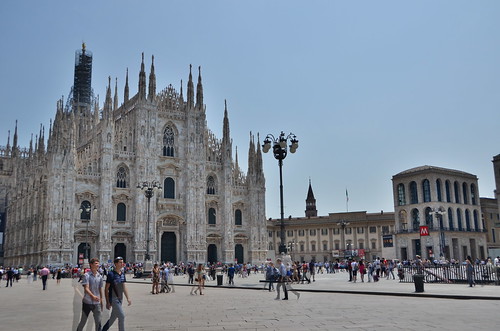
Although Milan’s Duomo is by far the most-visited attraction in the city, I didn’t so much as see the gaudy church the first time I visited. As a result, I made a beeline for it after I got showered and dressed the morning of my only day in Milano. It’s hard not to be enchanted, mobs of camera-wielding tourists or not.

Originally built in 1861, the incredible Galleria Vittorio Emanuele II (located just opposite the Duomo), is now an incredibly modern shopping mall
After I finished up at the Duomo I walked into Galleria Vittorio Emanuele II, an imposing structure just across the street from the slightly-more-imposing church. I was blown away by its sheer scale, but what I found more captivating was the contrast of its timeless construction with the plethora of fad retailers that now call it home.

Milan is part international fashion hub, part provincial northern Italy
Contrast is an essential part of why I’ve so quickly become intrigued by Milan. Although a good number of city dwellers (particularly in posh areas close to the Duomo) embody the well-dressed, well-coiffed aesthetic for which the city has become so internationally famous, the city has a number of decidedly authentic residents.

How do you prefer to get your news?
Another important contrast in Milan is that between old and new. Although Milan emerged as a modern commercial hub more out of necessity — the majority of the “old city” was destroyed in World War II — than choice, some of the city is still decidedly old school.
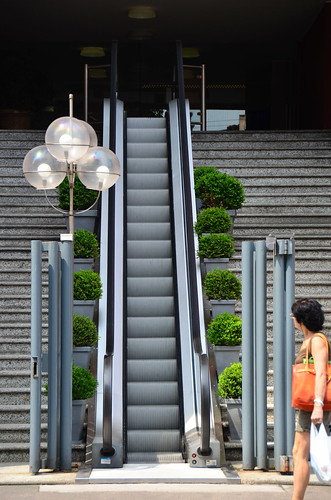
While I have seen one of these before (in Hong Kong), they have huge hills as an excuse — this is just excess!
As you might expect from a capital of fashion, Milan is also a city of excess in some regards. What’s funny is that I spotted this relatively discreet outdoor escalator after passing through a rather shabby-looking outdoor market.

In Milan, even city features that typically blend in stand out
Of course, nothing is particularly shabby in Milan, even when it’s less fancy than marble sidewalks or Armani stores with “gold on gold” promotions. The banana-yellow color of these bike racks add a pretty unique touch, don’t you think?
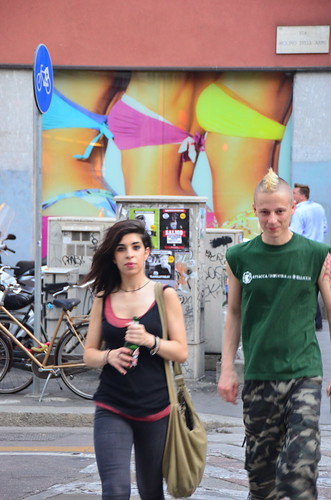
The real Milan provides similarly stark contrasts to the portion of the city most tourists see

The open-air Collone di San Lorenzo is popular place for people to congregate and drink at night
“This is called the Collone di San Lorenzo,” he said as we arrived at a classical-looking building just opposite some Roman columns. “People like to come here to drink, although it’s not so popular among tourists.” I had subconsciously assumed that the “real” part of Milan (which has a reputation as being “less Italian” than, say, Rome or Florence) would be even less Italian than the fake part, so the decidedly Italian architecture threw me off a bit.

Fancy a Campari spritzer?
And the decidedly Italian beverage selection — who can say “No” to a Campari spritzer in Italy? By the time the sun set about halfway into my second one, I felt content that my one-night stand in Milan had been a successful enriching one. And that’s before my one-night stand with my makeshift Milan tour guide even began!
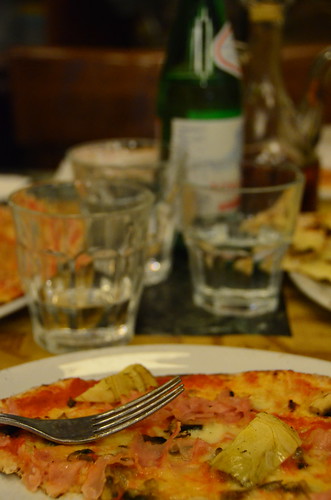
A Four Seasons pizza, topped with proscuitto, mushrooms, tomatoes and artichoke hearts
If you had told me when I departed my hostel in the morning that I would be ending my day in Milan with pizza and Campari, I probably would’ve laughed at you. I had set out with the impression that I would find a way to enjoy myself in Milan, even if I wasn’t “really in Italy” yet, and finished my stint here in the most Italian way possible.

Robert Schrader is a travel writer and photographer who’s been roaming the world independently since 2005, writing for publications such as “CNNGo” and “Shanghaiist” along the way. His blog, Leave Your Daily Hell, provides a mix of travel advice, destination guides and personal essays covering the more esoteric aspects of life as a traveler.








